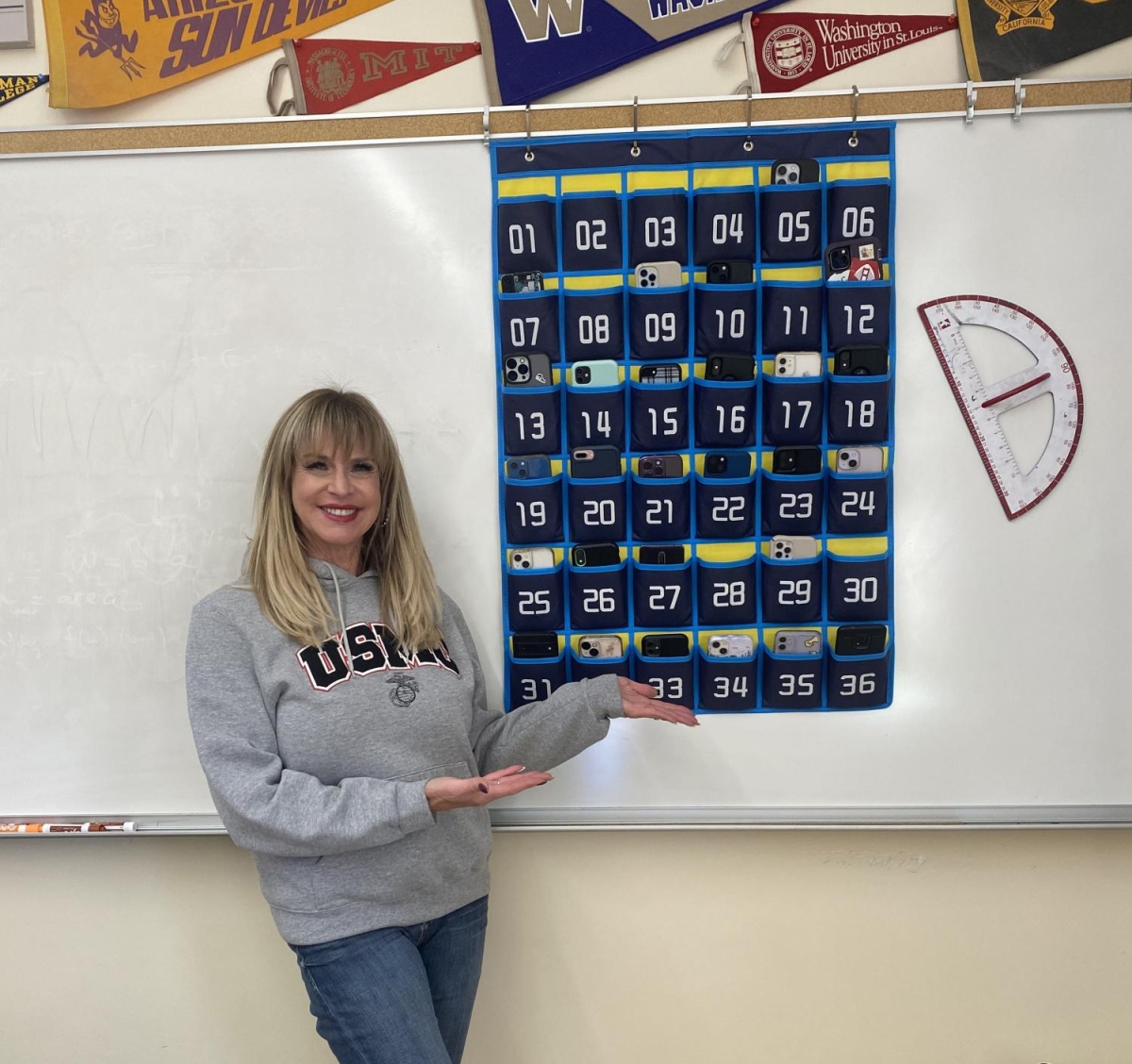For Aydin Konuk, Palo Alto High School junior, a world without his phone is one unimaginable.
“Clash Royale, TikTok, Discord … I use it [my phone] for everything,” Konuk said. “I don’t even wanna think about the possibility of not having a phone.”
In California, that world may be closer to reality than one might think — at least in a classroom setting.
In September, California Governor Gavin Newsom signed the Phone-Free Schools Act. The bill requires the governing body of a school district, a county education office or a charter school to, by July 1, 2026, create a policy limiting smartphone usage in a school setting. The new law builds on 2021’s AB 272 bill, which specifies school districts have the authority to regulate the use of smartphones during school hours.
The Phone-Free School Act cites evidence that “unrestricted use of smartphones by pupils at elementary and secondary schools … lowers pupil performance … promotes cyberbullying, and contributes to … teenage anxiety, depression and suicide” as reasoning in support of the bill’s incoming implementation. In addition, the bill points to previous cell phone restriction successes in France and Spain as further proof of the policy’s validity.
There are circumstances where exceptions can be made for certain students in regards to the cell phone limits — in the case of an emergency when medical professionals deem it necessary for the health or well-being of the pupil or when a smartphone is needed for the individual’s personal education program.
Opinions on the possible coming restrictions differ. Paly art teacher Susan La Fetra said she thinks the devices have a place in the classroom.
“We use phones for research sometimes in the classroom,” La Fetra said. “In my Art Spectrum class, we use them for references. It can be a really handy tool.”
Despite the benefits, La Fetra emphasizes that unrestricted cell phone access for students isn’t viable either.
“One of the biggest problems I have is kids playing games in class,” La Fetra said. “They seem to be addicted to these online games, playing them while they’re supposed to be working.”
Instead of outright restricting or banning cell phone access, La Fetra wonders if cell phone holders provide a viable solution.
“It would be great if the district decided to fund cell phone holders for everybody, rather than having us take that money out of our allotment for each class,” La Fetra said.
Paly junior Yobani Hernandez echoes La Fetra’s sentiment that outright cell phone banning wouldn’t be right, stressing that doing so would come with alarming implications for student rights going forward.
“It’s a breach of privacy,” Hernandez said. “How are you going to restrict phone use if I’m not even using it?”
Hernandez also worries that cell phone restrictions would be a safety concern.
“What if you need to have an emergency call to your parents?” Hernandez said.
In lieu of restrictions or a ban, Hernandez suggested a simpler solution.
“There could be a warning system where you get two strikes and after that your phone gets taken away,” Hernandez said.
Michael Rich, a professor of pediatrics at Harvard Medical School and practitioner of adolescent medicine at Boston Children’s Hospital, is a critic of all prospective bans — not just phones due to its infringment on students rights.
“I really dislike the idea of a ban of any kind,” Rich said.
But while Rich vehemently opposes banning the device, he has less qualms about restrictions.
He sees banning cell phones as a conflict between two separate categories, didactic — or “intended to teach” — and social-emotional learning.
“In terms of didactic learning, [phones] are, in almost every case, a distraction from [learning],” Rich said. “There are very few really effective ways, at least at this point, to use these tools [phones] as part of the educational process.”





